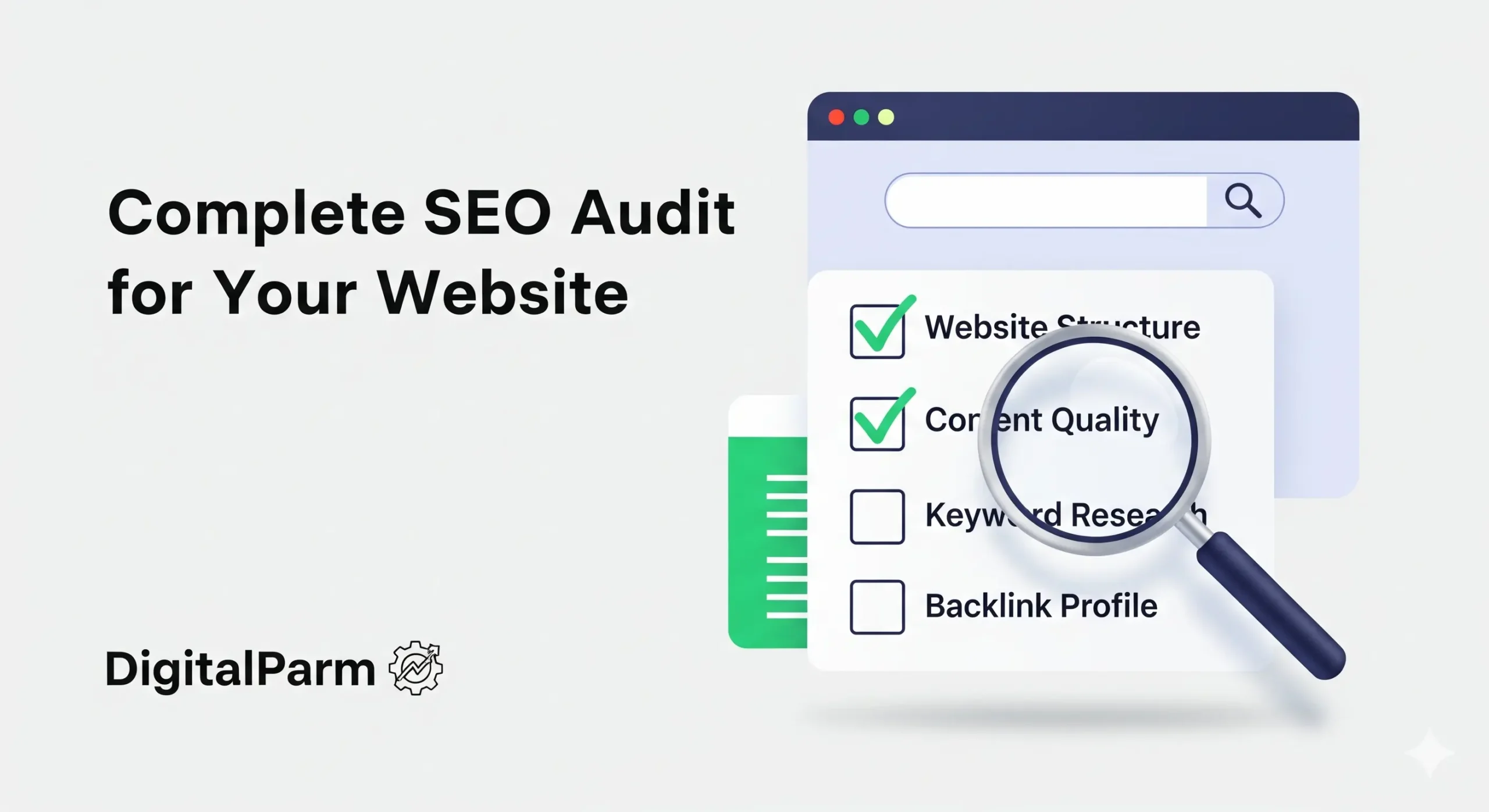
If you want your website to rank higher on Google and bring more traffic, you need to check if everything on your site is working well. This check is called an SEO Audit. It helps you find problems that stop your website from ranking and gives you a clear plan to fix them.
In this blog, we will learn step by step how to perform a complete SEO audit in simple language.
What is an SEO Audit?

An SEO audit is a full check-up of your website. Just like you visit a doctor to check your health, your website also needs a health check. An audit tells you what’s good, what’s missing, and what needs fixing for better search engine visibility.
The main goals of an SEO audit are:
- To find technical problems.
- To check on-page SEO elements.
- To review off-page SEO signals.
- To make sure the website is user-friendly.
- To improve rankings and traffic.
To understand Google’s trust signals better, check out Why E-E-A-T Is Important for SEO
Steps to Perform a Complete SEO Audit
1. Check Website Speed and Performance
- A slow website makes users leave quickly.
- Use tools like Google PageSpeed Insights or GTmetrix.
- Compress images, use caching, and reduce heavy scripts.
Tip: Try to keep your website load time under 3 seconds.
2. Mobile-Friendly Test
- Most people use mobile phones to browse the internet.
- If your site does not work well on mobile, you will lose traffic.
- Use Google Mobile-Friendly Test Tool.
- Make sure text is readable, buttons are easy to click, and design is responsive.
Looking for expert SEO services in Indore
3. Technical SEO Check
- Ensure your website has a proper XML sitemap.
- Create a robots.txt file to guide search engines.
- Check for broken links (404 errors).
- Use HTTPS for security.
Tools: Screaming Frog, Ahrefs, Site Audit, SEMrush Site Audit.
4. On-Page SEO Audit
On-page SEO means optimizing things inside your web pages.
- Titles & Meta Descriptions: Make sure each page has unique and clear titles and descriptions.
- Headings (H1, H2, H3): Organize content properly.
- Keyword Usage: Place target keywords naturally in content, title, and headings.
- Image SEO: Add alt text to images.
- URL Structure: Keep URLs short and clean. Example:
/seo-audit-guide/
Looking for expert SEO services in Patna
5. Content Quality Review
- Good content is the most important factor for SEO.
- Remove duplicate or thin content.
- Add new blog posts regularly.
- Update old posts with fresh information.
- Focus on user intent, not just keywords.
6. Backlink Profile Analysis (Off-Page SEO)
Backlinks are links from other websites to your site.
- Use tools like Ahrefs, Moz, or SEMrush to check your backlinks.
- Remove spammy or low-quality links.
- Try to get backlinks from trusted websites.
- Guest posts, directory listings, and collaborations help build quality links.
To get a complete toolkit, read our article on Best SEO Tools Recommended by SEO Experts
7. User Experience (UX) Audit
Search engines want websites that users enjoy visiting.
- Easy navigation (menus, links, categories).
- Clear call-to-actions (Buy Now, Contact Us).
- Good design and readable fonts.
- No intrusive pop-ups.
8. Local SEO Check (if your business is local)
- Claim your Google Business Profile.
- Add correct NAP (Name, Address, Phone number) on all pages.
- Get customer reviews.
- Use location-based keywords like “SEO services in Indore.”
9. Analytics & Tracking Setup
- Connect your site with Google Analytics.
- Add Google Search Console to track clicks, impressions, and keywords.
- Monitor which pages bring the most traffic.
10. Make a Fixing Plan
Once you find the problems, create a plan:
- Fix technical issues first.
- Improve speed and mobile-friendliness.
- Update and optimize content.
- Build quality backlinks.
- Track progress monthly.
Conclusion
A complete SEO audit helps you find hidden problems that stop your site from ranking. By checking speed, mobile-friendliness, technical setup, on-page SEO, and backlinks, you can improve your website’s performance. Remember, SEO is not a one-time task. Regular audits keep your site healthy and ahead of competitors.
Frequently Asked Questions
Q1. How often should I do an SEO audit?
At least once every 6 months. For big websites, quarterly audits are better.
Q2. Can I do an SEO audit myself?
Yes, using free tools like Google Analytics, Google Search Console, and PageSpeed Insights. But for deep audits, experts are recommended.
Q3. How long does an SEO audit take?
A small website may take 1–2 hours. A large website can take several days.
Q4. Do I need paid tools for SEO audits?
Not always. Free tools can help, but paid tools like Ahrefs, SEMrush, and Screaming Frog give more detailed insights.
Q5. What is the most important part of an SEO audit?
Content quality, technical health, and backlinks are the three most important parts.





